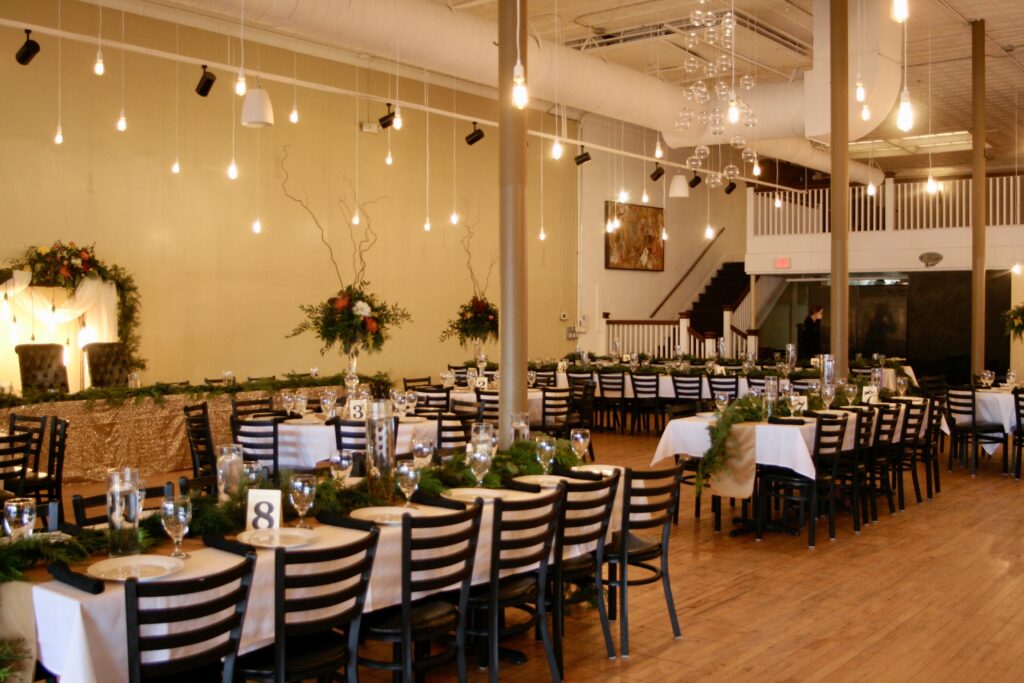Amid North Dakota’s Labor Shortage, Dispelling the Myth that “Nobody Wants to Work”
My journey into the restaurant business began in 2009 in Linton, (pop. 937), located 60 miles south of Bismarck, North Dakota. My mother had opened a small restaurant and asked me to come help get it started. I loved it instantly. It was a fast-paced, lively environment where I could put my business school degree to work. Since then, I’ve operated two additional restaurants in Mandan, closing one in 2018 and selling another in 2019. Today, I own and operate a catering and events venue going on four years.
Of the many pieces that need to fit together to make it in the restaurant business, none is more important than labor. Within the context of the North Dakota oil boom, labor has been the most pressing challenge we have faced. In the post-pandemic environment, the market has only gotten more difficult.
Hiring and retention have been ubiquitous problems in North Dakota since at least 2010. In the post-pandemic environment, with the unemployment rate hovering around 2%, applicants are not only difficult to find but also less likely to come to interviews or stay. In the last two months, my catering company had received approximately 24 completed online applications — but no applicants showed to schedule interviews. Even with the people we have hired, we are constantly short-staffed. People are unwilling or unable to pick up weekend shifts. Around town, “Help Wanted” signs are everywhere, online job posts abound, and the shortage is the topic of conversations everywhere. Talk revolves around the tiring, unhelpful dichotomy of lazy workers vs. exploitative bosses.
When I started in 2009, kitchen staff generally made between $8.50 to $10 an hour. My first cooks were hired at $12.50. These wages continued to climb. From 2009 to 2015, cooks averaged $13 and management $20 an hour. After 2015, the pay was raised to $15 to $16.50 for cooks and $22 to $25 for managers. Today, cook pay starts at $18, with management staying at $22 to $25. All other staff are guaranteed a minimum of $15 and are tipped.
Restaurant Labor Challenges
Labor shortages have consequences. In the food business, the first casualty is food and service quality. The increase in hours and duties makes the work more stressful for those still employed. Forget being able to grow your company — what most operators dread is imminent closure.
We rely on two primary strategies to mitigate staff shortages: turning down work and increasing the scope of what employees do. There is only one other full-time worker at our company besides me, and we understand we can only do so much. In the past, we’d been able to send different crews to multiple events — this is no longer the case. As the owner, I now have to do all the cooking, shopping, dishes, and janitorial work. My pastry chef cooks and helps with dishes. My general manager makes all the bookings, delivers off-set catering, tends bar, and does venue set-up/tear-down. Even my part-time HR person cooks a little and helps organize marketing events. We’ve also pivoted to products that do not require labor. For example, we have encouraged clients renting our venue to bring in their own food.
Now, let’s not kid ourselves: restaurant work is hard, stressful, underpaid, and not something most people aspire to. It also tends to attract people who deal with issues: neglected mental health, substance abuse, aggressiveness, unstable home lives, and problems with the law. Customer nastiness is real, even more so now. Finally, the stigma of being a “burger flipper” or server is just too much for some people. America is a place that tells you to get a job, then makes fun of you for not having the right one.
Obviously, the scarcity of labor is the primary driver of the current problems. The Bismarck area has also seen an increase in restaurant openings over the last few years, further increasing the competition for talent. In our area, the Bakken oil field affected people’s conception of what a job should entail and pay. Wages increased significantly for cooks and laborers who chose to go work in the oil fields, then expected to maintain those wages when they returned. It was not uncommon for the so-called “unskilled laborer” to be making $30 to $40 in the oil field, a wage that’s not within the realm of possibility for independent restaurants.
For me, the daily grind of restaurants became unsustainable. The wages and hiring and retention problems simply could not be solved. Increasing hourly wages to livable wages — a minimum of $18 across the board in my opinion — and providing healthcare were never going to happen. I’m glad I got out before the pandemic, although I face some of the same challenges in the catering/events world.
I don’t fault people who do not want to work in restaurants and are looking for positions that provide health insurance, better hours, and better pay. I would do the same. Finally, I believe that many people realized, after being forced to take a break, that they could leave a job for other opportunities.
The Labor Shortage’s Ripple Effects
Now, labor shortages extend beyond the food business. I am vice-chair of the county social services board, and we have been experiencing shortages of licensed social workers, eligibility workers, and support staff. The shortage of social workers has led to the creation of “family specialist” positions. For these roles, the education qualification is a bachelor’s degree in social sciences. Wages start at $28 an hour with a full benefits package, but positions have been challenging to fill. The resulting burden on existing staff has pushed a number of employees to leave social services for less stressful jobs even if they incur a pay cut. Elsewhere, the Mandan Police Department is short at least 10 officers, and hospitals and clinics are still experiencing nursing shortages.
To most North Dakotans, the culprit for the labor shortage has been the government, which exacerbated the problem by “paying people to stay home”— and it did keep people home. But let me be clear: the $600 per week saved lives, property, and the mental health of many people I know, particularly those who were laid off. Both my wife and I received that stimulus, and we were out of work for months. We were extremely grateful for unemployment benefits and the PPP loans — we depended on all of it. The loans made it possible for us to keep our businesses today. While the unemployment benefits perhaps lingered too long, it’s a small price for massive programs within the context of an unprecedented emergency. I’m glad we had the help.
In my view, the pandemic twisted how people view work. After a three-to-four-month break, many people have shifted priorities toward their family and perhaps came to view “working” as less important than before. Aside from this shift, many employees have reported anxiety, less resilience, and even depression when coming back to work. I employ part-time bartenders who are also teachers, and they report that students have been much more aggressive this year. Finally, having to step on eggshells around your colleagues — because of politics and Facebook-filled views on vaccines and masks — is making work environments unbearable now. It’s a miracle anyone still shows up.
Finding the Silver Lining
Yet in this uniquely challenging time, I can’t lose sight of the miracle of having a government that was willing to pay people to stay home while a pandemic raged outside.
And even in the post-pandemic period, many people enjoy and even thrive in the restaurant environment. Some workers are resilient, don’t take things personally, are goal-oriented, and choose these jobs to make extra money, or keep busy. Many like the special camaraderie or prefer the liveliness of a restaurant to the tedium of an office job. A lot of smart, creative food service professionals and hospitality thinkers work in restaurants. We feel a great sense of accomplishment and take pride when we finish a busy night and things go well. Despite what you may have heard, things can get a lot worse than having a restaurant job. I remain an optimist.
 Edgar Oliveira, a resident of Mandan, North Dakota, owns a catering business in Mandan and a café at the state museum in Bismarck. He is also chairman of the board of the municipal parking authority and serves on the board of Morton County Social Services.
Edgar Oliveira, a resident of Mandan, North Dakota, owns a catering business in Mandan and a café at the state museum in Bismarck. He is also chairman of the board of the municipal parking authority and serves on the board of Morton County Social Services.




